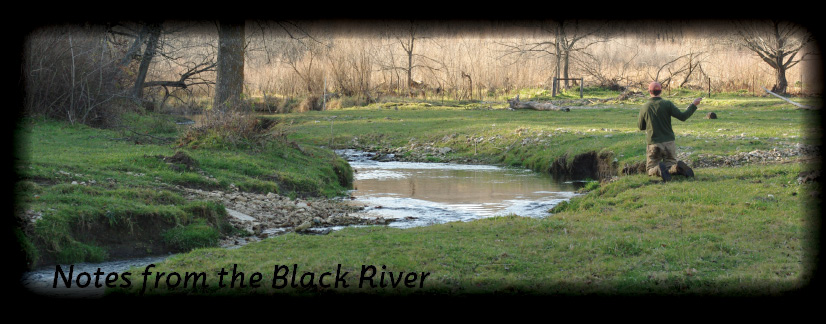People love to divide things up into categories. Why? Because continuous gradients are hard, if-not impossible to think about at times.
The world seems to divide itself up into discrete categories of 'things', yet these things share characteristics, making them more like gradients of one variation to another variation. One of the fundamental tasks of Ecologists and Natural Historians is to understand and characterize how the world seems to be both categorical and yet continuous at the same time. This is what Darwin thought about, it is what drove Linnaeus to developed a classification scheme for the worlds plants, and believe it or not, this is what is at the root of most debates on racism (we are different, but we are similar).
Take for example two fisherpeople, a bait fisher and a fly fisher. We can separate the two based on the type of lure they use, but does that truly make the two different on the whole? After all they are both fishing. On the one hand, they share a number of attributes, they typically have rods and reels. But on the other hand, the type of rod and reel that they use are different. So on the one hand, we could devise a scheme that would describe these two fisherpeople as a continuous gradient of characteristics (some shared, others varying) but on the other hand, we can call them two different classes (bait and fly). If I filled the room with my friends, we could debate the differences and similarities of bait and fly people all night. But we would just end up ripping on bait fisherman (which is ironic because we all bait fish at times). But that's not the point. The point is that the complexity of the world shows up everywhere as a juxtaposition of what appears as different classes of things, classes that are separated from each other by gradual differences. Recall that Darwin's theory was based on the premise that species share traits and that some traits vary almost continuously among species because we all share a common ancestor. Given enough time, species morph into what appears as different and classifiable but what is really similar and gradual when look more closely.
Thinking about this hurts the brain, which makes the people who think about this stuff reach for a bottle of whisky. After a couple of drinks, they end up thinking about it all over again, but from a slightly different perspective.
This was exactly what happened when a few folks got together at a conference in Scotland devoted to classification. After a few glasses of single malt scotch, they got to thinking about a classification scheme for scotch. What resulted was a great paper describing both the methods used in classification and descriptions of different scotches as well. Remember, there are definitely different types of scotch, but what makes one different from another is not so simple to describe. For everything you have ever wanted to know about Scotch, and for more than you would ever want to know about classification methods, check this out:
http://www.bio.umontreal.ca/legendre/reprints/Appl%20Stat%2043,%201994.pdf

No comments:
Post a Comment